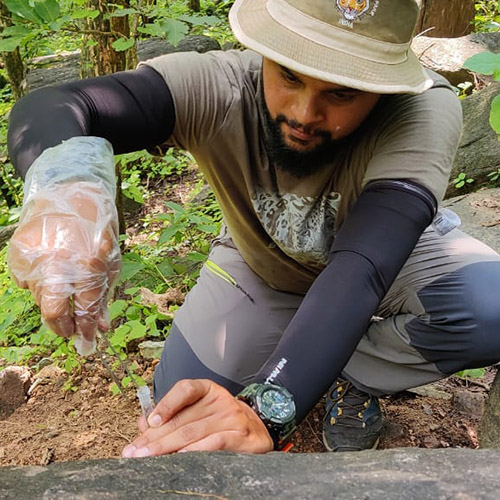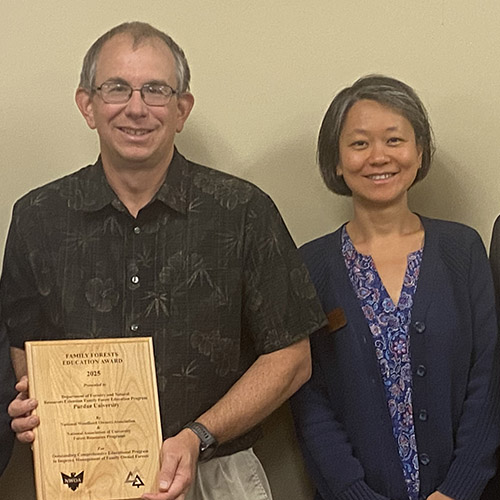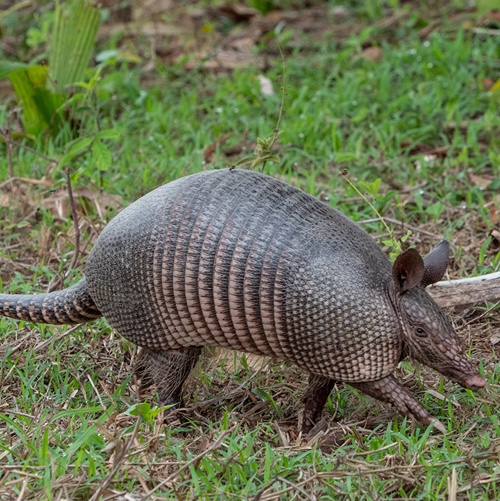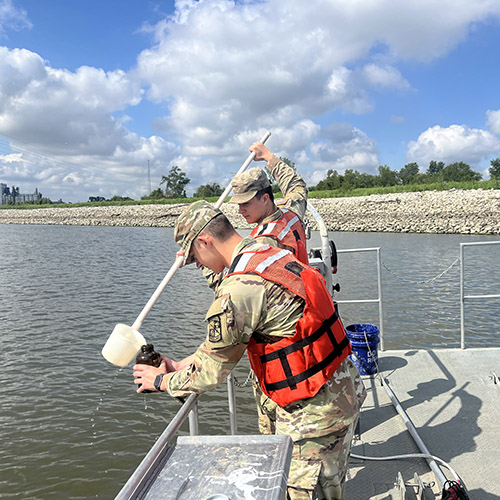Research Shows Toxicity of Forever Chemicals Varies Among Amphibian Species
This press release was originally published on the U.S. Geological Survey Newsroom page. It mentions Drs. Jason Hoverman and Marisol Sepulveda of Purdue Forestry and Natural Resources as well as former postdoctoral research assistant at Purdue, Wes Flynn, who is now a scientist for the United States Geological Survey.
Some important amphibian species are more vulnerable to the harmful effects of per- and polyfluoroalkyl substances, or PFAS, than other species, according to a recent study.
Commonly called forever chemicals, PFAS are widespread and long-lasting contaminants that are hazardous to human and environmental health. Scientists from Purdue University, including Drs. Jason Hoverman, Linda Lee and Marisol Sepulveda, and the U.S. Geological Survey studied the effects of PFAS on tadpoles of three amphibian species. These species are found throughout a wide portion of the U.S. and represent the three major amphibian groups that exist in the country. The researchers found that northern leopard frogs and eastern tiger salamanders were generally more susceptible to PFAS than American toads.
“Amphibians are vital to ecosystem health, but can be sensitive to environmental stressors like chemical contaminants,” said Wes Flynn, a USGS scientist and the lead author of the study. “Our study shows that the effects of PFAS in surface water on amphibians is highly dependent on the species being exposed.”
PFAS can enter waterways from industrial and consumer activities and products, including the foams used to suppress gasoline, jet fuel and oil fires. These aqueous film-forming foams, or AFFF, are used at airports and other facilities that operate aircraft to protect human life and property.
For this study, researchers used various concentrations of four PFAS that are found in surface water impacted by AFFF use. They found that the chemicals affected size, body condition and speed of development of the animals. All PFAS concentrations affected frogs and salamanders, but the toads, which develop into adults more quickly, were only affected by the highest levels.
"Our results show that some amphibians could suffer health effects at sites highly contaminated by these PFAS present in fire-suppressing foams,” Flynn said. "More work is needed to determine whether such exposures could contribute to population declines.”
This study is published in the journal Environmental Toxicology and Chemistry. For more information about USGS amphibian research, please visit the USGS Upper Midwest Environmental Sciences Center website.





